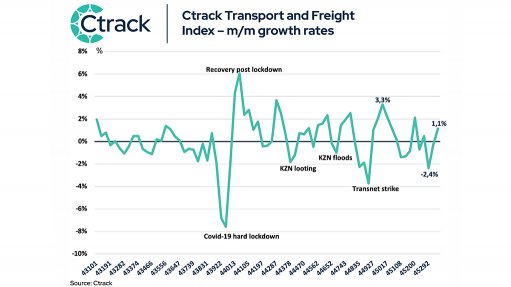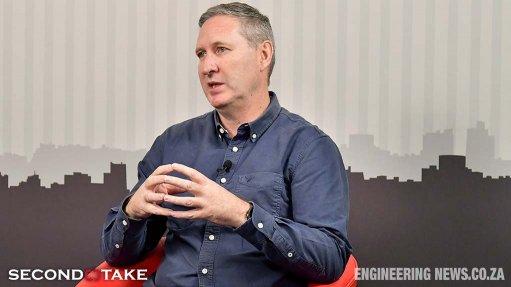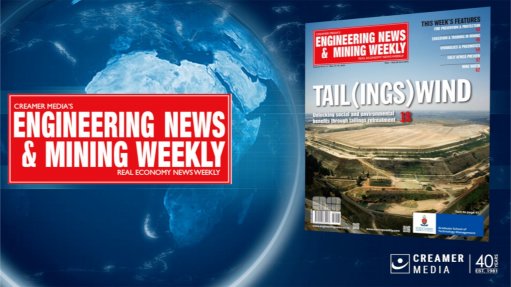You can cut your tax burden with the energy efficiency incentive
This article has been supplied as a media statement and is not written by Creamer Media. It may be available only for a limited time on this website.
The painful stick of the carbon tax, introduced in June 2019, is beginning to bite, with the next carbon tax payment due in July 2021. Initially, the financial burden on firms has not been back-breaking as it is being phased in, though many companies have been daunted by the additional, mandatory administrative and monitoring requirements.
However, while this carbon-reinforced tax stick applies to larger carbon emitters, there have been mixed responses to an accompanying carrot, the energy efficiency tax incentive known as S12L. A new analysis by the SA National Energy Development Institute (Sanedi) shows that R14.1bn in tax savings was secured through the incentive from its launch in November 2013 to the end of 2019, enabling a total of 18.7TWh of energy savings.
We are talking big, big bucks. The average tax claim approved for energy efficiency projects in the period covered by the report was R77.5m. And that is without the wider benefit to the planet and the permanent costs savings energy efficiency can bestow.
There have been more recent indications that the Covid-19 lockdown enabled many firms to take their first serious look at the S12L incentive, resulting in an uptick in applications. When your back is to the wall, every little helps. And the S12L incentive is not little; as we have seen it can be worthwhile.
As with many of these incentive schemes S12L is due for review and faces a sunset clause at the end of next year. Unless it is rolled over or replaced, it will lapse. No more applications will be considered.
As one of those who is accredited to verify and monitor energy efficiency — not always the first topic people want to chat to me about at cocktail parties — I am in no doubt that this incentive is a valuable tool. Indeed, the government has stated that it will accompany the carbon tax with substantial energy-saving initiatives. We don’t yet have the full picture, but S12L is an important building block for a more comprehensive and more ambitious set of support measures.
I want it to continue, but I do hope the review process will include an examination of the gaps in S12L take-up, especially on smaller projects. The incentive is available to a wide range of registered businesses from all economic sectors, provided the energy savings can be quantified, verified and sustained for 12 consecutive months.
Sanedi’s analysis shows uptake of the tax incentive by a diverse range of economic sectors, but with participation dominated by mining & quarrying as well as manufacturing. The greatest energy savings and tax benefits have been in these two sectors. So what of the other sectors? Well, the report looked at wholesale and retail and found there has not been much activity. It reads: “The wholesale and retail trade sector is one of the five largest contributors to GDP in SA and a large contributor to employment in the country.
“Considering the diversity of enterprises, size and contribution of the wholesale and retail sector to the economy, it is disappointing that only three companies have sought to make use of the (S12L) tax incentive. Altogether five projects have been registered on the programme, three of which have been completed. All projects are from retailers trading in food, clothing and related household goods with no participation in the tax incentive by wholesalers.”
This lack of interest could be due to two factors, both of which should be addressed. The first is that there is not enough information out there about S12L. If a retailer is not aware of the potential tax benefits of investing in energy efficiency, it just won’t happen. The second issue may be that the incentive has been constructed to be attractive to mining and manufacturing, but not so much for retailers and other sectors.
It may just be that the rewards are outweighed by the administration costs and other hassles. This can and should be addressed in the review. Of course mines, furnaces, power plants and factories are the biggest users of energy. But every sector of the economy must be encouraged to join the fight to save the planet. If the industry-wide structure of the incentive is failing to cover everyone, maybe there needs to be different levels of support for different categories of business. And some thought should also be given to how other forms of support for going green could work better alongside S12L.
There is also the issue of the wider public sea-change in attitudes to pollution and polluters. The Sanedi report refers to the surge in environmental, social & governance (ESG) reporting. It notes that: “Large listed companies as well as banks and fund managers who invest in them, are increasingly being pressured to report their contribution to climate change, their exposure to it and what they are doing to address these issues.”
If you can do this, and pocket a tax incentive at the same time, it is a win-win. And don’t forget this issue is likely to become more pressing as more and more firms wake up to the expensive reality that they, too, have to pay the carbon tax.
Cova Advisory
Comments
Press Office
Announcements
What's On
Subscribe to improve your user experience...
Option 1 (equivalent of R125 a month):
Receive a weekly copy of Creamer Media's Engineering News & Mining Weekly magazine
(print copy for those in South Africa and e-magazine for those outside of South Africa)
Receive daily email newsletters
Access to full search results
Access archive of magazine back copies
Access to Projects in Progress
Access to ONE Research Report of your choice in PDF format
Option 2 (equivalent of R375 a month):
All benefits from Option 1
PLUS
Access to Creamer Media's Research Channel Africa for ALL Research Reports, in PDF format, on various industrial and mining sectors
including Electricity; Water; Energy Transition; Hydrogen; Roads, Rail and Ports; Coal; Gold; Platinum; Battery Metals; etc.
Already a subscriber?
Forgotten your password?
Receive weekly copy of Creamer Media's Engineering News & Mining Weekly magazine (print copy for those in South Africa and e-magazine for those outside of South Africa)
➕
Recieve daily email newsletters
➕
Access to full search results
➕
Access archive of magazine back copies
➕
Access to Projects in Progress
➕
Access to ONE Research Report of your choice in PDF format
RESEARCH CHANNEL AFRICA
R4500 (equivalent of R375 a month)
SUBSCRIBEAll benefits from Option 1
➕
Access to Creamer Media's Research Channel Africa for ALL Research Reports on various industrial and mining sectors, in PDF format, including on:
Electricity
➕
Water
➕
Energy Transition
➕
Hydrogen
➕
Roads, Rail and Ports
➕
Coal
➕
Gold
➕
Platinum
➕
Battery Metals
➕
etc.
Receive all benefits from Option 1 or Option 2 delivered to numerous people at your company
➕
Multiple User names and Passwords for simultaneous log-ins
➕
Intranet integration access to all in your organisation


















